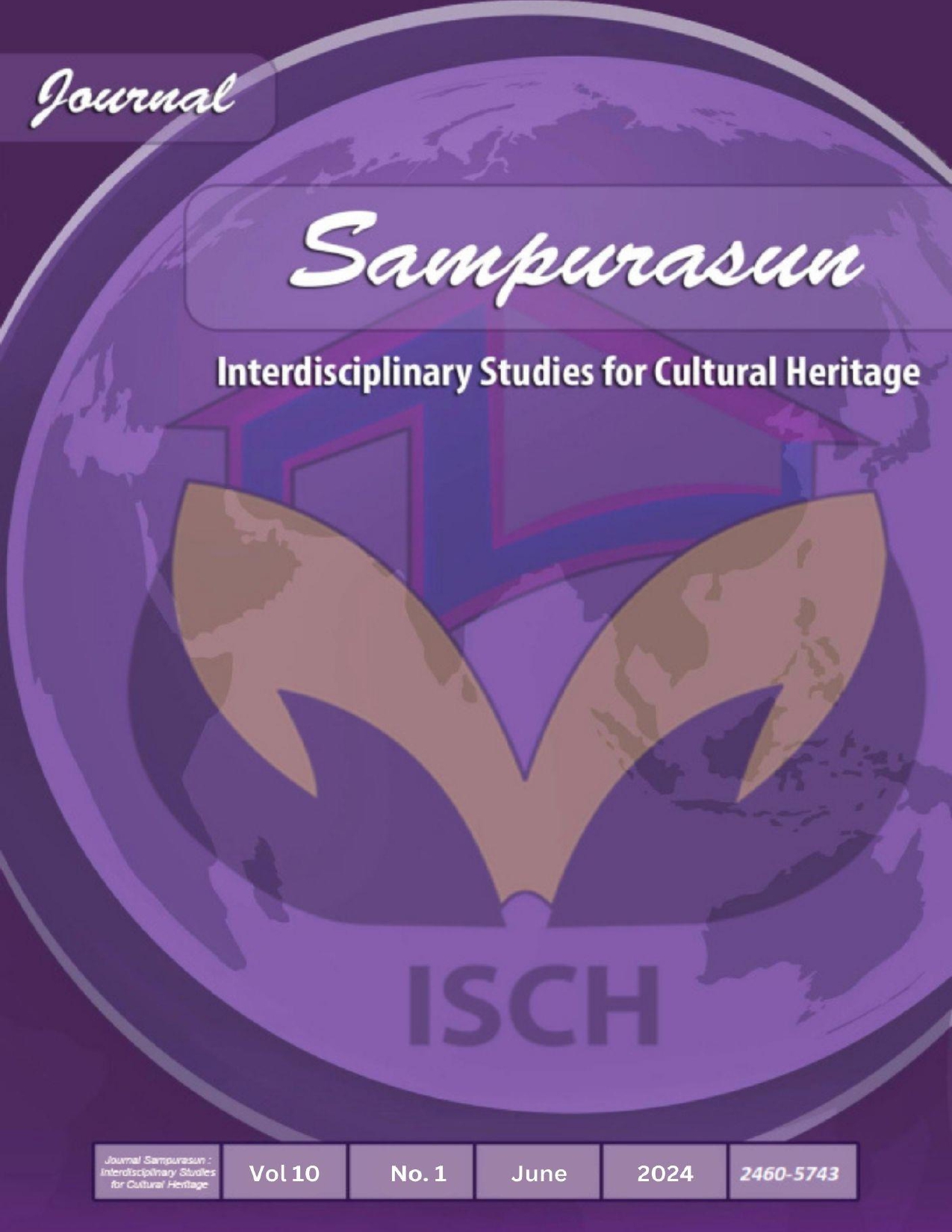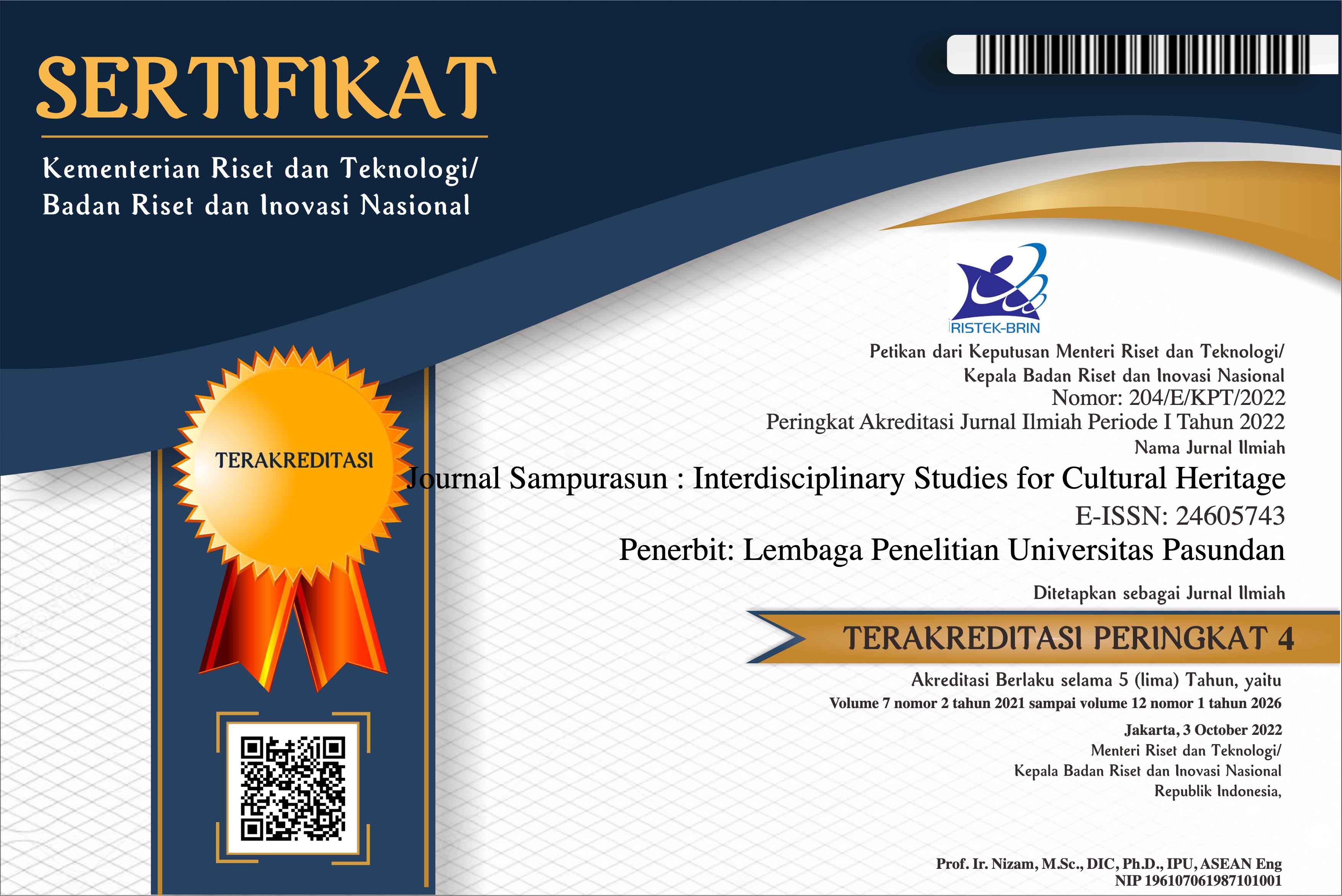CULTURAL RELATION ON DISCOURSE MARKERS IN PUNCHLINES ON RICKY GERVAIS’ SUPERNATURE STAND-UP COMEDY SHOW
DOI:
https://doi.org/10.23969/sampurasun.v10i1.13700Keywords:
Discourse Marker, Humour Theory, PunchileAbstract
This research investigates the intricate functions of discourse markers (DMs) in Ricky Gervais' stand-up comedy, exploring their alignment with humour theories and their impact on punchline delivery. The purpose of this research is (1) to define the categories and functions of DMs utilised by Ricky Gervais in formulating punchlines and (2) to define the application of DMs in the punchlines within the framework of three theories of humour. The data was obtained from Ricky Gervais’ Stand-up Comedy Show entitled “SuperNature” on Netflix. A qualitative descriptive was applied. The theoretical basis of this research is Brinton’s theory which entails the category and function of DMs and Raskin’s theory regarding the creation of humour. Through examination, the research reveals that Gervais employs a diverse set of DM functions to navigate and enrich his comedic narratives, including the textual and interpersonal categories. The textual category, specifically on DM as an information indicator, indicates the highest overall outcome, with 18%. Moreover, their appearance showcases the dynamic role of DMs in appealing to humour theories. It can be shown that DM commonly appeared in the punchlines on the show, reaching a significant number of 46% in the incongruity category, aiding and amplifying punchlines.
Downloads
References
Attardo, S. (2017). The routledge handbook of language and humor. In The Routledge Handbook of Language and Humor. https://doi.org/10.4324/9781315731162
Bell, N. D. (2007). Humor comprehension: Lessons learned from cross-cultural communication. Humor, 20(4), 367–387. https://doi.org/10.1515/HUMOR.2007.018/HTML
Brinton, L. J. (1996). Pragmatic Markers in English. In Pragmatic Markers in English. Walter de Gruyter & Co. https://doi.org/10.1515/9783110907582
Cahyanti, R. (2021). Discourse Markers In A Vlog Video By Bnay Youtube Channel. LANGUAGE HORIZON: Journal of Language Studies, 9(2), 47–60.
Crible, L., Abuczki, Á., Burkšaitienė, N., Furkó, P., Nedoluzhko, A., Rackevičienė, S., Oleškevičienė, G. V., & Zikánová, Š. (2019). Functions and translations of discourse markers in TED Talks: A parallel corpus study of underspecification in five languages. Journal of Pragmatics, 142, 139–155. https://doi.org/10.1016/j.pragma.2019.01.012
Cuenca, M. J., & Crible, L. (2019). Co-occurrence of discourse markers in English: From juxtaposition to composition. Journal of Pragmatics, 140, 171–184. https://doi.org/10.1016/j.pragma.2018.12.001
Etyas, R., & Saputri, G. (2019). An Exploration of the Uses and Functions of Discourse Markers in Students ’ Oral Presentations. In UNIVERSITAS NEGERI SEMARANG.
Farahani, M. V., & Ghane, Z. (2022). Unpacking the function(s) of discourse markers in academic spoken English: a corpus-based study. Australian Journal of Language and Literacy, 45(1), 49–70. https://doi.org/10.1007/s44020-022-00005-3
Fraser, B. (1999). What are discourse markers? Journal of Pragmatics, 31(7), 931–952. https://doi.org/10.1016/S0378-2166(98)00101-5
Gironzetti, E. (2018). Prosodic and Multimodal Markers of Humor. The Routledge Handbook of Language and Humor, 400–413. https://doi.org/10.4324/9781315731162-28/PROSODIC-MULTIMODAL-MARKERS-HUMOR-ELISA-GIRONZETTI
Hasniar. (2017). Discourse Markers Used In Brad Bird’s Movie “Tomorrowland.” In Universitas Islam Negeri Alauddin (Issue 40300113051). http://repositori.uin-alauddin.ac.id/id/eprint/8598
Heine, B., Kaltenböck, G., Kuteva, T., & Long, H. (2021). The Rise of Discourse Markers. In The Rise of Discourse Markers. Cambridge University Press. https://doi.org/10.1017/9781108982856
Mintz, L. E. (1985). Standup Comedy as Social and Cultural Mediation. American Quarterly, 37(1), 71. https://doi.org/10.2307/2712763
Muller, S. (2005). Discourse markers in native and non-native English discourse. In Discourse Markers in Native and Nonnative English Discourse (Vol. 138). John Benjamins Publishing Company.
Naufalia, A., & Fajrideani, W. (2022). ANALYSIS OF LANGUAGE COMPLIANCE IN THE FILM PEREMPUAN TANAH JAHANAM AS A REPRESENTATION OF JAVA CULTURE. Journal Sampurasun : Interdisciplinary Studies for Cultural Heritage, 8(Sampurasun Vol. 8 No. 2-2022). https://doi.org/10.23969/sampurasun.v8i2.6231
Norrick, N. R. (2016). Discourse markers in oral narrative. In Perspectives in Pragmatics, Philosophy and Psychology (Vol. 4, pp. 297–327). https://doi.org/10.1007/978-3-319-12616-6_11
Nosa, Y. A. (2020). An Analysis of Discourse Markers in Donald Trump’s Speeches. American Journal of Social and Humanitarian Research, 2(8), 30–37. https://globalresearchnetwork.innovativeacademicjournals.com/index.php/ajshr/article/view/293
Nur Ariesta, E., & Simatupang, E. (2019). THE ILLOCUTIONARY ACTS IN THE MOVIE THE DEATH CURE: PRAGMATICS STUDY. Journal Sampurasun : Interdisciplinary Studies for Cultural Heritage. https://doi.org/10.23969/sampurasun.v5i2.1782
Raftinia, A. G., & Heryono, H. (2020). Grammatical Cohesion Found In ‘ This Christmas ’ Novel by Nora Roberts : Discourse Analysis. Bircu-Journal.Com, 18524–18529. https://www.bircu-journal.com/index.php/birci/article/view/5838
Raskin, V. (2008). The primer of humor research. In The Primer of Humor Research. https://doi.org/10.1515/9783110198492
Rofiq, Z., & Priyono, E. S. (2021). Discourse Markers of Humor Analysis in Trevor Noah’s Stand-Up Comedy. Lingual: Journal of Language and Culture, 11(1), 14. https://doi.org/10.24843/ljlc.2021.v11.i01.p03
Rohmah, U. (2020). Discourse markers in conversation of PUBG gamers video. In Universitas Islam Negeri Maulana Malik Ibrahim. http://etheses.uin-malang.ac.id/id/eprint/25958
Schiffrin, D. (1987). Discourse Marker (J. J. Gumperz (Ed.)). Cambridge University Press.
Schiffrin, D. (2008). Discourse Markers: Language, Meaning, and Context. In The Handbook of Discourse Analysis (Vol. 19, Issue 40, pp. 54–75). https://doi.org/10.1002/9780470753460.ch4
Schourup, L. C. (2016). Common discourse particles in english conversation. In Common Discourse Particles in English Conversation. https://doi.org/10.4324/9781315401584
SETIAWAN NUGRAHA, D. N. (2016). Verb Go Combinations in Perspective English Linguistics and Culture. Journal Sampurasun : Interdisciplinary Studies for Cultural Heritage, 2(01), 101. https://doi.org/10.23969/sampurasun.v2i01.115
Takamura, R. (2020). Discourse marker well : A linguistic key to the well-being of human interaction. Core.Ac.Uk, March. https://doi.org/10.21276/sb.2016.2.10.2
Trihartanti, R., & Dianita, D. (2020). The Use of “Oh” and “Well” as Discourse Markers in Conversation of Bandung State Polytechnic Students. Language Education and Acquisition Research Network, 7(1), 1–23.
Uicheng, K., & Crabtree, M. (2018). Macro Discourse Markers in TED Talks: How Ideas are Signaled to Listeners. PASAA, 55, 1–31. https://eric.ed.gov/?id=EJ1191738
Vanderbauwhede, G. (2021). Review of A Contrastive View of Discourse Markers. Discourse Markers of Saying in English and French. In Corpus Pragmatics (Vol. 5, Issue 2). https://doi.org/10.1007/s41701-020-00096-8
Yuda Yuwana, R., & Ananda Pertiwi, S. (2022). THE PERSPECTIVE OF LANGUAGE CULTURE IN THE DOMINATION OF THE THEME OF THE NATIONAL SONG “BAGIMU NEGERI.” Journal Sampurasun : Interdisciplinary Studies for Cultural Heritage, 8(Sampurasun Vol. 8 No. 2-2022). https://doi.org/10.23969/sampurasun.v8i2.6264
Yuniar, D. (2013). Ya as discourse marker: Indonesian stand – up comedy strategy in producing laughter. International Journal of Applied Linguistics and English Literature, 2(6), 103–110. https://doi.org/10.7575/aiac.ijalel.v.2n.6p.103
Downloads
Published
Issue
Section
License
Copyright (c) 2024 Journal Sampurasun : Interdisciplinary Studies for Cultural Heritage

This work is licensed under a Creative Commons Attribution 4.0 International License.
Copyright Notice
Authors should not withdraw their submitted papers because the withdrawal wastes voluntary works devoted by an associate editor and reviewers. But, we accept the withdrawal of a submitted paper if authors have unavoidable reasons. In the event that a manuscript is to be withdrawn from submission to Sampurasun Journal, a letter must be sent to the editorial office requesting withdrawal by e-mail (sampurasunjournal@unpas.ac.id) with its scanned PDF file, before the notification of acceptance for publication.
The withdraw request letter must include the following information. Paper ID, Paper title, Authors names, Reason why the paper must be withdrawn, and Date and signatures of all the authors (or signature of the contact author).
If only the contact author signs the letter, he/she must obtain the agreement of the withdrawal from all the other authors and the letter must include the description that all the other authors agreed the withdrawal. The journal will not withdraw a manuscript from peer review until such a letter has been received. Authors must not assume their manuscript has been withdrawn until they have received appropriate notification from the editorial office. Withdrawal of a manuscript subsequent to acceptance for publication will only be granted in the most exceptional of circumstances.
After the paper is accepted for publication, the withdrawal is not permitted in principle. The authors must always pay the charge even if the withdrawal is permitted. Any request of withdrawal that does not follow the above procedure is treated as invalid. If illegal submission, e.g., plagiarized or duplicate submission, is found for a paper, the withdrawal of the paper will never be permitted and the authors will be punished based on the rule. It is not acceptable practice to withdraw a manuscript in the event of acceptance at another journal. This constitutes dual submission. The editorial office of the other journal will be notified of your actions. In such circumstances Sampurasun ISCH may chose to impose appropriate punitive action subject.
Withdrawal Penalty
Author is not allowed to withdraw submitted manuscripts, because the withdrawal is waste of valuable resources that editors and referees spent a great deal of time processing submitted manuscript, money and works invested by the publisher. If author still requests withdrawal of his/her manuscript when the manuscript is still in the peer-reviewing process, author will be punished with paying $200 per manuscript, as withdrawal penalty to the publisher. However, it is unethical to withdraw a submitted manuscript from one journal if accepted by another journal. The withdrawal of manuscript after the manuscript is accepted for publication, author will be punished by paying US$500 per manuscript. Withdrawal of manuscript is only allowed after withdrawal penalty has been fully paid to the Publisher. If author don't agree to pay the penalty, the author and his/her affiliation will be blacklisted for publication in this journal. Even, his/her previously published articles will be removed from our online system.


















